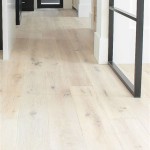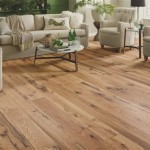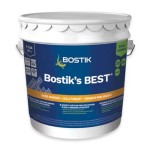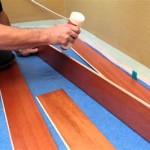Water-Resistant Bamboo Flooring: Navigating Durability and Aesthetics
Bamboo flooring has gained popularity as a sustainable and aesthetically pleasing alternative to traditional hardwood. Its inherent strength and natural beauty make it a desirable choice for many homeowners. However, a common concern surrounding bamboo flooring is its susceptibility to water damage. Fortunately, advancements in manufacturing have led to the development of water-resistant bamboo flooring, addressing this concern while retaining the inherent benefits of the material.
Understanding Water Resistance: A Deeper Dive
Water resistance in bamboo flooring is achieved through a multi-layered approach. The bamboo itself is treated with a sealant that repels moisture and prevents penetration. This sealant is typically a combination of resins and waxes, creating a barrier that protects the bamboo from water damage. Additionally, the manufacturing process involves a layer of moisture-resistant core beneath the top layer of bamboo. This core, often made of plywood or other moisture-resistant materials, provides an additional layer of protection.
It is crucial to understand that even with these advancements, water-resistant does not mean waterproof. While water-resistant bamboo flooring can withstand occasional spills and splashes, prolonged exposure to water can still cause damage. It is important to address spills promptly and avoid exposing the floor to standing water. Regular maintenance, such as sweeping, vacuuming, and occasional mopping with a damp cloth, can help preserve the longevity of water-resistant bamboo flooring.
Benefits of Water-Resistant Bamboo Flooring
Water-resistant bamboo flooring offers numerous benefits for homeowners:
Durability and Versatility
Water-resistant bamboo flooring is known for its exceptional durability. Its inherent strength, coupled with the moisture-resistant treatments, makes it capable of withstanding heavy foot traffic and everyday wear and tear. This makes it a suitable option for high-traffic areas like kitchens, bathrooms, and entryways. The versatility of water-resistant bamboo flooring allows for its use in various rooms and settings, providing a cohesive and stylish aesthetic throughout the home.
Sustainability and Environmental Considerations
Bamboo is a fast-growing and renewable resource, making it an environmentally responsible choice. Compared to hardwood, which requires decades to mature, bamboo reaches maturity in a fraction of the time. This rapid growth cycle minimizes the environmental impact of bamboo flooring, contributing to sustainable practices. Additionally, the manufacturing processes for water-resistant bamboo flooring often employ eco-friendly techniques, reducing the overall carbon footprint.
Aesthetic Appeal and Design Options
Water-resistant bamboo flooring offers a wide array of aesthetic options to complement different design styles. It is available in various colors, finishes, and grain patterns, allowing homeowners to achieve a desired look and feel. The natural beauty of bamboo creates a warm and inviting ambiance, while also being versatile enough to blend with contemporary and traditional design schemes.
Considerations for Choosing Water-Resistant Bamboo Flooring
When selecting water-resistant bamboo flooring, several factors should be considered:
Water Resistance Rating
Look for flooring with a water resistance rating that meets the requirements of your specific application. Higher ratings indicate greater resistance to moisture and prolonged exposure to water. Consult with a flooring specialist or manufacturer to determine the appropriate rating for your needs.
Installation Method
Water-resistant bamboo flooring can be installed using various methods, including floating, glue-down, and nail-down. The chosen method should be compatible with the flooring and the subfloor conditions. Consulting with a professional installer is recommended to ensure proper installation and optimal performance.
Maintenance Requirements
Understand the maintenance requirements of water-resistant bamboo flooring. Regular cleaning, such as sweeping, vacuuming, and occasional mopping with a damp cloth, is essential to prevent dirt buildup and maintain the floor's appearance. Avoid using harsh chemicals or abrasive cleaners, as these can damage the sealant and compromise the water resistance.
Water-resistant bamboo flooring offers a compelling blend of durability, sustainability, and aesthetic appeal. By understanding its features, benefits, and considerations, homeowners can make informed decisions and enjoy the advantages of this versatile flooring option.

Aquaseal 7mm W Pad Strand Carbonized Distressed Water Resistant Engineered Bamboo Flooring 7 5 In Wide Ll

Is Bamboo Flooring Water Resistant The Company

Aquaseal 7mm W Pad Toffee Distressed Water Resistant Strand Engineered Bamboo Flooring 5 13 In Wide Ll

Water Resistant Bamboo Flooring Ll

Aquaseal 7mm W Pad Latte Distressed Water Resistant Strand Engineered Bamboo Flooring 7 48 In Wide Ll

Aquaseal 7mm W Pad Everest Distressed Water Resistant Strand Engineered Bamboo Flooring 7 48 In Wide Ll

Aquaseal 7mm W Pad Strand Natural Water Resistant Engineered Bamboo Flooring 7 5 In Wide Ll

Lifeproof Waverly 9 32 In T X 5 W Waterproof Bamboo Flooring 536 Sqft Pallet Hl676 40 The Home Depot

Hdpc Waterproof Strand Bamboo Wellmade Performance Flooring

Aquaseal 7mm Pad Strand Carbonized Distressed Engineered 72 Water Resistant Bamboo Flooring 7 5 In Wide Floor Ers
Related Posts








